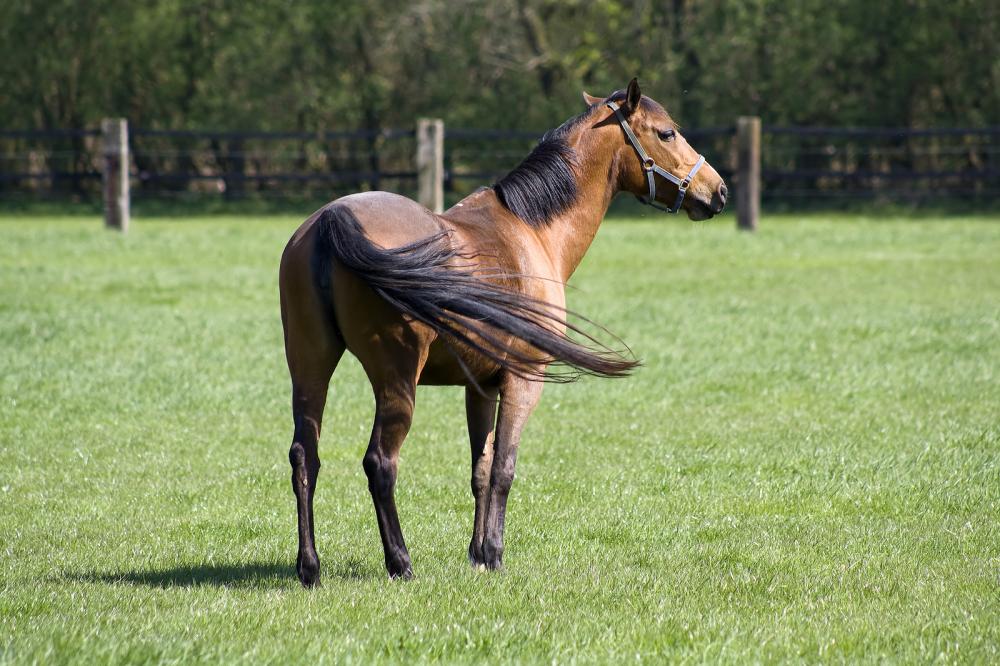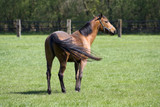As humans we rely on verbal communication. To get a clue of the signals our fellow equines send us, it is important that we pay closer attention to the sounds that your horse produces. Although horses do use vocalization in their communications, it is more natural for them to use non-verbal expressions through their body postures and gestures.
To better understand and bond with your equines, you have to observe them carefully and learn their regular behavior.
Once you are able to recognize horses’ normal behavioral patterns, you will be able to identify abnormalities when they occur, and quickly distinguish the reasons behind them.
Even though all horses have different temperaments, there are certain behavioral patterns and body movements which indicate similar things for every horse.
We are going to review the 3 most important body parts that can help you grasp what your horse may be saying to you.
Positioning of the Ears
Horses have very sensitive, sharp hearing. Horse’s highly mobile ears can detect a slight change in the environment due to their flexibility and ability to hold straight and move in different directions.
The forward positioning of the equines ear indicates that your horse is alert and paying attention to something that is happening in the surrounding vicinity.
When your horse is angry, its ear will be pinned back near the neck. This is a direct signal to maintain some distance for your own safety.
Also, when their ears are turned to the side, it denotes that your horse is sleepy, and it’s not paying attention to you or what is happening around. Don’t spook your horse when it’s in this sate.
Spooking will make your horse very nervous and can trigger a reaction which can lead to very dangerous consequences. You will know that your horse is listening to something that is behind, if its ears are turned back but not pinned.
Moreover, if the equine is anxious, its ear will swivel quickly. Look out for these signs and carry out the precautionary measures.
Forelegs
Like humans, the body language of a horse can tell you a lot about their stance. When a horse is standing with front legs out to the sides or slightly leaning backwards, this indicates that they are frightened and are close to bolting away.
Also, it could be a sign of health or leg problems. If your horse is not moving at all, standing with splay legs or can’t walk straight, those are red flags that something maybe be wrong. Check your horse’s legs for any bruising, hoof damage or improperly fitted shoe. Call a veterinarian if necessary.
Pawing usually happens when equines are hungry, bored or stressed. However, vigorous pawing and pinned ears are signs of anger. Try to calm your horse down or give them time to relax and rest.
Humans stomp when they don’t get things their way. Likewise, horses stomp when they are frustrated or irritated. Address the issue as soon as possible, because it can lead your horse to suddenly striking and seriously injuring the rider or whoever is nearby.
Tail
Everybody knows that horses have beautiful tails if properly groomed and shampooed. Yet, it is not only for demonstration that they have such marvelous tails, but also for communication and, of course, to swat the flies.
If the tail is compressed down, it indicates nervousness. A rider or an owner should gently pat their horse’s back as a signal to calm down and relax.
If you see a raised tail, that’s a sign your equine is energized or excited about something. At that moment the horse is not paying attention to its surrounding, hence there is a high chance it can get easily spooked and buck.
Keep your horse busy and active so that it remains focused!
Lastly, if the horse is rapidly rustling their tail, it is another sign of anger and irritation. It is a forewarning which should be taken very seriously.
There are a lot more to equines’ non-verbal communication, however the signs above are universal for any breed. Train and bond with your horse, and watch its behavior in order to get a better idea about its emotional state, well-being, what irritates or excites your horse.
Tackle your horse’s moods accordingly!
Regularly check on and groom your beloved equine with quality supplements from LV Performance, feed it high quality hay, use an equine specific horse probiotics and allow it to have fresh water at all times.
Your horse will look and feel great, so will you riding into the sunset!


